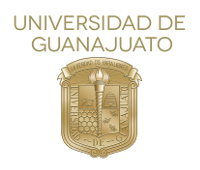Please use this identifier to cite or link to this item:
http://repositorio.ugto.mx/handle/20.500.12059/13422Full metadata record
| DC Field | Value | Language |
|---|---|---|
| dc.rights.license | http://creativecommons.org/licenses/by-nc-nd/4.0 | es_MX |
| dc.contributor.author | Jousepe Jouvani Ruiz López | es_MX |
| dc.contributor.author | Jesús Mauricio Elizondo Ramírez | es_MX |
| dc.contributor.author | Jorge Arturo Cruz Sánchez | es_MX |
| dc.contributor.author | Ximena Flores Esparza | es_MX |
| dc.contributor.author | Antonio de Jesús Arias Sánchez | es_MX |
| dc.contributor.author | Laura Cecilia Débora Delgado | es_MX |
| dc.creator | José Esteban Hernández Gutiérrez | es_MX |
| dc.date.accessioned | 2025-02-19T20:18:47Z | - |
| dc.date.available | 2025-02-19T20:18:47Z | - |
| dc.date.issued | 2024-09-30 | - |
| dc.identifier.issn | 2395-9797 | es_MX |
| dc.identifier.uri | http://repositorio.ugto.mx/handle/20.500.12059/13422 | es_MX |
| dc.description.abstract | La investigación se centra en evaluar la viabilidad de aplicar principios de geometría fractal en el diseño arquitectónico para mejorar el confort térmico en casas unifamiliares en Irapuato, una de las áreas más afectadas por el aumento de temperaturas en Guanajuato. Se plantea un diseño que contrasta una vivienda con geometría fractal frente a una tradicional ortogonal, analizando su eficacia en la regulación térmica. Se justifica la necesidad de este estudio debido a la ineficiencia sustentable de los métodos activos actuales para controlar las temperaturas interiores, proponiendo un enfoque pasivo que integre consideraciones climáticas desde la concepción del proyecto. | es_MX |
| dc.language.iso | spa | es_MX |
| dc.relation | https://www.jovenesenlaciencia.ugto.mx/index.php/jovenesenlaciencia/article/view/4435/3915 | es_MX |
| dc.rights | info:eu-repo/semantics/openAccess | es_MX |
| dc.source | Jóvenes en la Ciencia: XXIX Verano de la Ciencia UG. Vol. 28 (2024) | es_MX |
| dc.title | Comparación de eficiencia en confort térmico con geometría fractal en plantas arquitectónicas de casa unifamiliar en Irapuato, Gto. | es_MX |
| dc.title.alternative | Comparison of efficiency in thermal comfort with fractal geometry in architectural plans of a single-family house in Irapuato, Gto. | en |
| dc.type | info:eu-repo/semantics/article | es_MX |
| dc.subject.cti | info:eu-repo/classification/cti/4 | es_MX |
| dc.subject.keywords | Arquitectura bioclimática | es_MX |
| dc.subject.keywords | Geometría fractal | es_MX |
| dc.subject.keywords | Confort térmico | es_MX |
| dc.subject.keywords | Irapuato, Gto. | es_MX |
| dc.subject.keywords | Bioclimatic architecture | en |
| dc.subject.keywords | Fractal geometry | en |
| dc.subject.keywords | Thermal comfort | en |
| dc.type.version | info:eu-repo/semantics/publishedVersion | es_MX |
| dc.publisher.university | Universidad de Guanajuato | es_MX |
| dc.description.abstractEnglish | This study investigates the applicability of fractal geometry principles in architectural design to enhance thermal comfort in single-family homes in Irapuato, Guanajuato, an area significantly impacted by rising temperatures. The research proposes a comparative analysis between a fractal-designed house and a traditional orthogonal structure, assessing their thermal regulation effectiveness. The justification for this study arises from unsustainable inefficiency of current active methods for temperature control, advocating for a passive approach that incorporates climatic considerations from the project's inception. The findings aim to contribute to sustainable architectural practices that address the challenges posed by climate change. | en |
| Appears in Collections: | Revista Jóvenes en la Ciencia | |
Files in This Item:
| File | Description | Size | Format | |
|---|---|---|---|---|
| Comparación deeficiencia enconfort térmico con geometría fractal en plantas arquitectónicas decasa unifamiliar en Irapuato, Gto.pdf | 807.5 kB | Adobe PDF | View/Open |
Items in DSpace are protected by copyright, with all rights reserved, unless otherwise indicated.

